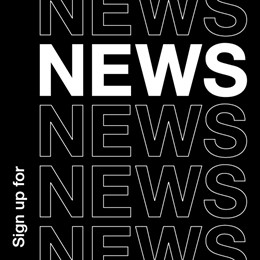The return of the trickster

Steph Thomas, brand strategist at London-based brand design agency FreshBritain, discusses the idea of the ‘trickster’ brand archetype, and why it’s making a comeback.
When iconic lads’ mag, Loaded, reappeared a few months ago, I was caught off balance. Same with the You've been Tango'd strapline which appeared in a new iteration on our screens recently. I imagined they’d been consigned to history given how problematic the original 90s versions look, with hindsight.
In brand language, Tango and Loaded are examples of the trickster archetype. And they’re not alone; some of our best-known brands have turned a bit trickster in their recent ads. I give you Andrex (First Office Poo), Weetabix (Britain in decline) and McDonalds (eyebrows).
Getting inside the trickster
Let’s remind ourselves what trickster is and what it isn’t. If you came of age in the 80s, it’s Matthew Broderick in Ferris Bueller’s Day off. In the 90s, it’s Jim Carrey in the Mask and in the 2000s it’s Deadpool or Loki, the god of mischief.
While sewing chaos and mayhem, a trickster is essentially playful if unpredictable. A provocative levity runs through their DNA and it’s hard not to feel affection and warmth for them as they laugh at the most inappropriate moments or prick pomposity. They rarely set out to cause harm. They provide light relief and escapism from a grim reality, via an occasional hand grenade lobbed in with a zero fucks attitude.
But don’t confuse trickster with today’s populist provocateurs born out of culture wars for whom outrage is a livelihood they’ve become slaves to. The Lawrence Foxes, Nigel Farages, Katy Hopkins of the world. They might be bringers of chaos but their agendas are much too serious and pompous to be considered tricksters.
Why the time is ripe for trickster
In a recent Financial Times article about humour in advertising, just one line addressed the consumer point of view. Personally, I need to know why people think the way they do. Brands feed culture and culture feeds brands in one virtuous circle.
- Is it in response to every kind of crisis we’ve been living through since 2008, as per the FT’s thesis? In a ‘fin de siècle’, fuck it mood, if everything’s really that bad and we’re that broken, we might as well have a laugh
- Or is it that consumers are kicking back against the hand wringing and earnestness of impact and purpose-led brands, cancel culture and the ‘woke agenda’ which has provided limited bandwidth for silliness and fun?
- When you look to social media, it’s full of unfiltered personalities that continuously up the ante on acting goofy to stand out in a crazed race to the bottom. Are brands feeling they have to act ever sillier and shout louder to get those fleeting eyeballs?
Bringing in change – the serious side of the trickster
It would be much too easy to dismiss the trickster as simply in it for shits and giggles. But it has a serious side, serving as a powerful agent of change.
Tricksters don’t create change obviously like the archetypal rebel warrior. Instead, they move things on and make people think and behave differently using playful chaos as their tool of choice. Familiarity with the trickster lies deep in our consciousness. Taking a western civilisation frame of reference, it goes back to Hermes, the ‘divine trickster’, with wit and cunning part of his playbook; or to Puck in Shakespeare’s Midsummer Night’s Dream.
Mae West is a great example of the trickster archetype. She led the way in depicting strong female role models in early Hollywood, with a large dose of dry humour and provocation. Her sayings live on to this day: “Marriage is a great institution. I'm not ready for an institution” and “Men are my life, diamonds are my career!” She didn’t preach, she brought in change through her characters and the causes she supported, including her early advocacy for gay rights.
The world of change that influences trickster
In our knife-edge world where profound change can come about in a split second it’s hard to know how long-lived any brand trend or archetype will be. What are the other dynamics that may determine how trickster plays out?
One scenario imagines an ebbing and flowing between purpose and the humour of the trickster, each jockeying to hold pole position then falling back to give space to the other.
Or alternatively, purpose and the trickster represent two polarised splinter groups of audiences where there is no commonality or desire for discourse, facing off in permanent culture wars.
In all honesty it could be either, both or none, but the fact remains that the trickster is back, bringing a bit of mischief, joy and levity into a dark world. Let’s enjoy it while we can!













